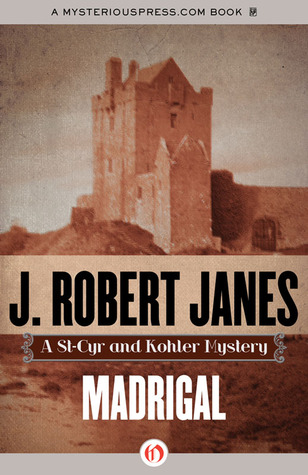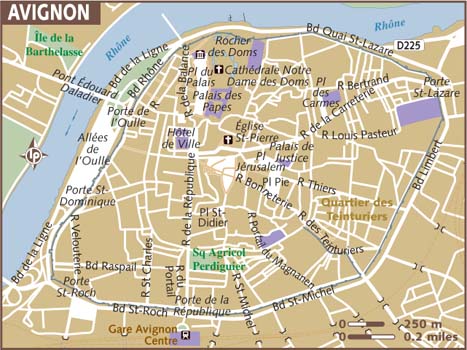They are at it again, Inspector Hermann Kohler and Chief Inspector Jean-Louis St-Cyr, an odd couple of Occupied France, in another atmospheric outing.
These two are routinely dispatched where angels fear to tread, each with the scars to prove it.
It is a very cold winter in January 1943 and the screws are tightening.

While Kohler carries a card that says Gestapo on it, he is on the lowest rung of that feared and fearsome organisation in Kripo. The Gestapo has many other branches including the feared Sipo, Sicherheitspolizei, or security police which are much more important. Kripo is short for Kriminalpolizei and Gestapo is short for Geheime Staatspolizei, Kripo investigates crimes, period.
In a criminal world, we might say Kripo is devoted to civilian crimes, rape, murder, larceny, and other felonies.
State run genocide, slaughter, torture, slavery, systematic theft on a national scale, these are the norm in this world.
St.-Cyr outranks Kohler as a chief inspector of the Sûreté National from Paris. However, in the arrangement of the Occupation Kohler has charge of weapons and much else.
These two were thrown together in the first title in the series, which now runs to seventeen volumes. The first was ‘Mayhem’ (1992) and this is the tenth. They are now well acquainted.
The niceties of Occupied, Forbidden Zone, and Unoccupied — Vichy — France have collapsed with the Allied landings in North Africa. The pretence that Vichy was a sovereign neutral is exploded.
A young woman associated with a cathedral choir has been murdered and this duo, who have learned a lot about each other over their collaboration, is sent to clear it up.
As always there are wheels within wheels within wheels within wheels. While Kohler and St Cyr trust each other, they do not trust their superiors who send them here and there, sometimes in the hope that they will fail. They meet obstruction at every turn.
Anticipating an Allied invasion in southern France, the Wehrmacht has no use for outsiders while it prepares for an invasion. The local Vichy authorities want to run the show, if no other reason than to prove their loyalty to the regime and its sponsor, and they attribute the murder to terrorists of the resistance to justify further arrests to bump up their key performance indicators. Other branches of the Gestapo would be rid of these two busybodies but for the protection of the chief in Paris. Louis’s superior offers no protection whatever. Most of this obstruction is reflex, ‘Non’ is the easiest word.
But some, or all, of the obstruction in this case might be material. Who can say without investigation?
They are down south in Avignon where the winter Mistral seems to come straight from the Russian front. Between 1309 and 1377 Avignon was the centre of the Christian world because a succession of popes resided there, and it remained under the control of the Papacy as a papal state until 1791 long after the Holy See returned to Rome. Only the French Revolution made it French, again.
 The line of the wall is visible in this contemporary map.
The line of the wall is visible in this contemporary map.
Added to the murder is the ambition of the sitting Bishop in Avignon to see the return of the Pope to Avignon. Crazy? Maybe, but it is a crazy world where genocide is normal and purse-snatching is a crime. With the slow collapse of Mussolini’s regime, perhaps the Pope might leave Rome or be evacuated by the Germans as a prize for ransom or some such. Is it a coincidence that the music master of the cathedral is an Italian from Nice? Before Napoleon, Nice was Nizza, an Italian city and it was claimed as such in 1940 by the Italian ally of Germany.
If the Pope leaves Rome where better to go than the Palais des Papes to drink Châteauneuf-du-Pape in Avignon.
 Le Palais des Papes as it is today.
Le Palais des Papes as it is today.
The scandal of this murder in the cathedral could likely spoil this hope. Better to keep it all quiet.
Then as now Avignon is a world to itself, preserving to this day its medieval ramparts that cut off the ancient core of the city from the rest of the world. The cathedral sits at the very centre of this rock world. And within it the madrigal singers are a protected species who want no intrusions. Non!
Around and around Kohler and St Cyr go questioning everyone, being told repeatedly not to question anyone least the superficial tranquility be disturbed. Yet head office in Paris demands resolution. They are threatened, harassed, misled, and lied to. All typical.
Tranquility indeed, as the Milice scours the town for Jews, the Germans rake the hills for Maques, Vichy officials steal hidden food, the Churchmen flagellate themselves and each other, and the Nuns get up to their own worship. What a concoction this is.
It is a nice touch that in this crazy world, the sanest man they meet in Avignon is the German commandant.
Janes conveys the exhaustion, the dreariness, the hunger, the bitter cold of unheated rooms, the fatigue, the gnawing suspicion, the darkness of a world where the German vampire has sucked everything out of France and the French to fed the maw of the Russian Front. (And also Belgium, Luxembourg, the Netherlands, Poland, and more.)
As a prisoner of war St Cyr learned German. His wounds precluded further military service in 1939, as did Kohler’s wounds. He, too, had been a prisoner of war and learned French in captivity. Both in the Great War, the war to end all wars, World War I.
St Cyr’s wife and only child were killed by a booby trap; it might have been set by either the Maques or by the Milice. It may have been intended for him. Kohler’s two sons died on the Steppes. His wife long ago gave up life as a policeman’s frau.
Their only loyalty is to each other, and that has been forged in the pursuit of the guilty no matter who or what. They will find out who done it, no matter what. What happens then is up to higher powers at headquarters.
There are times when the reader must be patient. Dialogue marked with quotation marks is often preceded or succeeded by thoughts, and it is not always clear to this reader whose thoughts they are since only rarely does Janes honour the convention of adding ‘Kohler said’ or ‘St Cyr thought.’
Nor are these signposts always used when they speak to others, there are strings of dialogue without an indication of who is the speaker of which lines. Sometimes it is clear which voice is whose, but not always, and that is when the guesswork and errors set in. I write as a maker of guesses and the errors.
While quibbling over minutiae I add that the word choice is at times numbingly repetitive. People speak softly a lot and close doors softly. Softly, softly, softly. Get a thesaurus and try quietly, low, delicately, smoothly, tenderly, faintly, gradually, gently, and more.
Generally, the characters are distinguished in their manner of speech. That is an uncommon achievement. All hail.
 J. Robert Janes
J. Robert Janes
Each title in the series is one word and I like the clarity and audacity of that, e.g., ‘Gypsy’ (1997), ‘Salamander’ I1994), or ‘Tapestry’ (2013). There is a complete list of his novels on Wikipedia.
Skip to content
